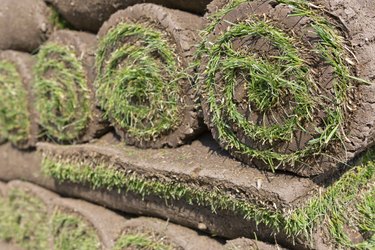
Once you prepare the soil and roll out your sod, your lawn will look green and complete. The next few weeks, however, are critical to the establishment of a good root system, one that can support the healthy growth of your grass for years to come. Though sod will begin to root within the first few weeks, don't expect a mature root system to develop in less than a year.
Soil Preparation Is Essential
Video of the Day
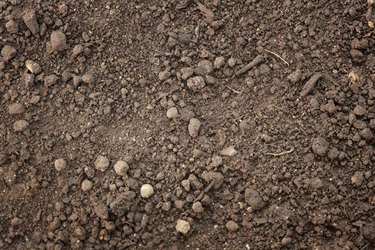
Whether you sod or seed a new lawn, the soil must be improved first. This is your one chance to make a difference in the health of your lawn, to give it a good foundation -- the work you put in now will pay off for years to come. Have a professional soil test done so you can apply fertilizer and lime in the right quantities. Spread 2 to 4 inches of organic matter over the top of the ground, add the recommended fertilizer and dig in deeply. Loose, aerated soil is best for root growth so don't stint on the depth of the digging either.
Video of the Day
Timing Your Sod Installation
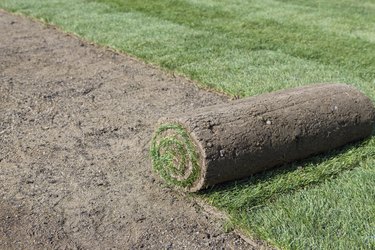
One advantage of sod is that it can be rolled out at almost any time of the year that it's available from the farm but fall is the best time to start a new lawn in most places. The soil is still warm enough from summer to stimulate root growth but the cool, moist air puts less stress on the new roots to keep the leaves supplied with water. You can start your lawn in midsummer, however, but you'll need to water frequently, perhaps as much as five or six times a day.
Care During The First Month
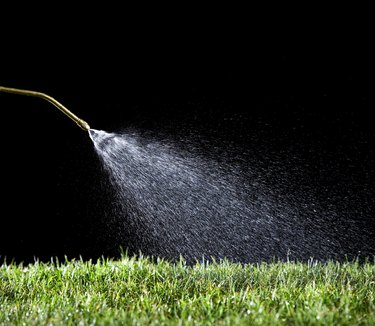
Frequent watering is essential for the first week at least, longer in summer. The short roots already on the sod should never dry out. After this, the watering should become less frequent but longer, encouraging to roots to go deeper to look for moisture without stressing the plant. Any drought at this point can severely diminish the health of your lawn. Mow about 14 days after sod installation, being careful to remove no more than one-third of the length of the grass blades.
Care During The First Year
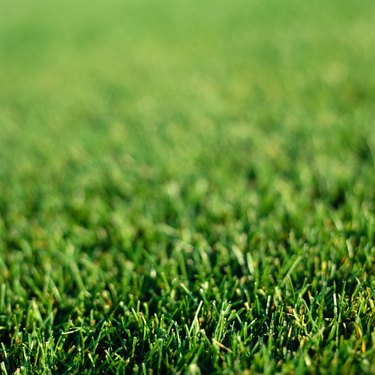
Gradually increasing the length of time between waterings is the key to helping your lawn to develop a deep root system that can reach the moisture and nutrients needed to sustain long-term growth. Frequent light applications of water give you a shallow-rooted lawn, vulnerable to drought. Fertilize at times recommended for your area, mow fairly high, and you should have a healthy, disease-resistant lawn for years to come.